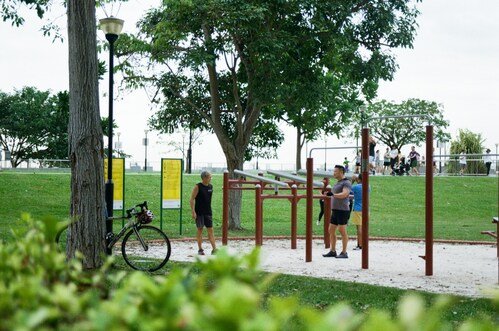
Understanding the Benefits of Exercise for Seniors
Regular exercise offers an array of physical, mental, and emotional benefits for seniors, significantly contributing to their overall well-being. Engaging in physical activity enhances mobility, flexibility, and balance, which are crucial for maintaining independence and preventing falls. According to the Centers for Disease Control and Prevention (CDC), falls are a leading cause of injury among older adults, but exercise, particularly balance and strength training, can substantially reduce this risk.
Physical activities such as walking, swimming, and yoga have been shown to improve muscle strength and joint flexibility. These improvements allow seniors to perform daily activities with greater ease, contributing to enhanced quality of life. Additionally, experts emphasize the role of regular exercise in improving cardiovascular health, which can lower the chances of heart disease and hypertension—common health issues faced by seniors. Keeping physically active helps to maintain healthy body weight and supports digestion, further enhancing overall health.
The benefits of exercise extend beyond the physical realm. Engaging in regular physical activity has a positive impact on mental health. Studies indicate that seniors who exercise experience reduced symptoms of depression and anxiety. The release of endorphins during physical activity can lead to improved mood and emotional well-being. Moreover, exercise has been linked to enhanced cognitive function, aiding in memory retention and reducing the likelihood of cognitive decline related to age.
Furthermore, participating in group exercise classes or community activities fosters social interaction, combating feelings of loneliness and isolation that can often affect seniors. Statistics show that active seniors are more likely to maintain social ties, which are essential for mental health. In conclusion, the myriad benefits of exercise for seniors reinforce the importance of an active lifestyle, facilitating not only physical health but also mental and emotional well-being.
Types of Exercises Suitable for Seniors
Engaging in regular physical activity is essential for maintaining health and wellness in seniors. Various types of exercises can cater to different fitness levels and physical abilities. Understanding these exercises allows seniors to incorporate safe and effective routines into their daily lives.
Aerobic exercises are crucial for improving cardiovascular health and longevity. Activities such as walking, swimming, or cycling can enhance stamina and promote overall fitness. Seniors are encouraged to aim for at least 150 minutes of moderate aerobic activity per week, which can be broken into achievable segments, such as 30-minute sessions, five times a week. Those with limited mobility might opt for seated exercises, such as chair aerobics, which can also provide cardiovascular benefits without unnecessary strain.
Strength training is another important category that helps preserve muscle mass and bone density, which can diminish with age. Simple activities with resistance bands, light weights, or even body weight exercises like wall push-ups can be effective. Seniors should incorporate strength training exercises at least twice a week, ensuring a focus on major muscle groups. It is vital to start with lower weights and gradually increase as strength improves, always prioritizing safety and proper form.
Flexibility exercises, such as stretching or yoga, aid in maintaining joint health and reducing stiffness. Gentle stretching routines can be performed daily, enhancing overall flexibility and improving the range of motion. Simple stretches like neck rolls, shoulder shrugs, or seated hamstring stretches fit well within this category, accommodating all levels of mobility.
Lastly, balance activities are essential to prevent falls, a common concern among seniors. Exercises like tai chi, standing on one leg, or heel-to-toe walk can help improve stability. Seniors are advised to practice balance exercises several times a week to foster confidence and reduce the risk of injury.
Ultimately, incorporating these varied types of exercises into a regular routine can lead to significant health benefits, enabling seniors to remain active and independent while managing any existing health challenges effectively.
Creating a Personalized Exercise Plan
Developing a personalized exercise plan is essential for seniors to enhance their physical health while considering their individual capabilities and limitations. The first step involves assessing one’s current fitness level, which can be achieved through simple self-evaluations or formal fitness assessments conducted by professionals. This assessment should evaluate cardiorespiratory endurance, strength, flexibility, and balance. Understanding one’s baseline fitness provides valuable insights for setting achievable goals.
Once the assessment is complete, the next step is setting realistic and attainable fitness goals. These goals should align with personal interests and health conditions, promoting a sense of achievement without risk of injury. For example, a senior may aim to walk for 30 minutes several times a week or incorporate specific strength training exercises to build muscle endurance. It is important to remember that progress may be gradual, and goals can be adjusted as fitness levels improve.
Choosing appropriate activities is crucial in a personalized exercise plan. Seniors should consider low-impact exercises that minimize stress on the joints, such as swimming, cycling, or yoga. Engaging in various activities not only keeps the routine enjoyable but also helps in targeting different muscle groups and improving overall well-being. Additionally, incorporating balance and flexibility exercises can further prevent falls and enhance mobility.
Before starting any new exercise regime, it is imperative for seniors to consult healthcare professionals. This consultation can help identify any health limitations or necessary modifications, ensuring a safe exercise experience. Staying motivated can be enhanced by tracking progress, celebrating achievements, and seeking support from friends, family, or community groups. Ultimately, a well-crafted personal exercise plan serves as a roadmap, guiding seniors towards a healthier, active lifestyle.
Overcoming Obstacles to Regular Exercise
Engaging in regular exercise can significantly enhance the health and well-being of seniors, yet numerous challenges often impede their efforts to stay active. Physical limitations due to chronic conditions, mobility issues, or post-surgery rehabilitation can deter seniors from participating in exercise routines. To combat this, it is essential to tailor exercise programs that accommodate individual capabilities, focusing on low-impact activities, such as chair yoga or water aerobics, which allow seniors to gradually build strength without strain.
Lack of motivation can also hinder exercise adherence among the elderly. A supportive community can make a considerable difference in fostering commitment. Seniors may benefit from joining local exercise groups or classes designed specifically for their age group. These social settings not only provide accountability but also foster friendships, which can make the process more enjoyable and less isolating. For those who may prefer exercising at home, technology can play a crucial role. Online platforms offer a range of virtual classes that cater to varying fitness levels, ensuring that seniors can find something that resonates with them.
Finding enjoyable exercises is pivotal to maintaining interest and motivation. Engaging in activities they love, such as dancing, gardening, or simple walking in nature, can enhance the likelihood of regular participation. Real-life success stories can serve as powerful motivation; many seniors have overcome their obstacles to establish a consistent habit of engaging in physical activity. Stories illustrating these journeys often highlight the importance of persistence and demonstrate the benefits of remaining active at an older age. By focusing on these strategies, seniors can successfully navigate challenges and embrace a healthier lifestyle through regular exercise.




